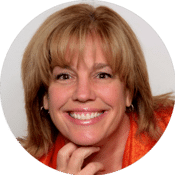It was 1999 and I wasn’t partying like Prince’s song. Instead, I was sitting in a plush office chair, around a polished mahogany table, surrounded by the executive leadership team in the president’s conference room. I’m sure we were discussing something vitally important … or not. I don’t remember. I do remember it was springtime. The wall behind me was floor-to-ceiling glass that arched at the top so when you were standing underneath it, it felt like you were standing outside. Spring was in full bloom. Lime green grass met a baby blue sky. The many cherry trees connected heaven and earth with an explosion of pink blossoms.
I couldn’t see the natural beauty, though. My back was turned away from it. My full attention was on a yellow legal notepad in front of me, where I scratched these four words with my pen, “This is killing me.”
That thought was crystal clear. There were no dissenting voices in my head. No back-and-forth pinging. No catastrophizing. It was a simple truth: If I stayed here, in this great job with these wonderful people, a piece of me would remain unexpressed, wither, and, yes, eventually die from disuse.
I was at an inflection point.
In math, an inflection point is when a curve changes direction. In life, too, an inflection point is when your path changes. When what was is no longer, and what will be is not yet.
We all come up against these times in our lives when the ground beneath us shifts. Your inflection point may be different than mine, but we all have them. It’s part of being human.
A marriage of 30 years dissolves.
You, or someone you love, is diagnosed with cancer.
Your last child leaves home.
A loved one dies.
You retire, move, or change jobs.
The challenge is that, when we come to these inflection points, we don’t have a map. It’s new territory. So our current internal and external resources may not be able to support us.
I remember spending hours with Dr. Google to help me navigate the uncertainty. What do I type in, “My job is killing me”? “How to find happiness”? “What’s the meaning in my life”? Ha! I got so much junk back, and went on so many wild goose chases. And many people within my network were just not able to understand what I was looking for.
I failed at finding the answers on Dr. Google. I was treading water. I tried this and that and then this again.
I failed because the approach I took was trial-and-error. And driving that desperation was the fear of being stuck … of wasting my life because I wasn’t sure how to engage that piece of me that wanted to be expressed.
Instead of wasting life, I wanted to be able to reliably lift myself out of the muck, not just this time but future times … because being stuck is part of being human. I wanted tools that would work again and again.
On the deepest level, I wanted what we all want: a well-lived life, one full of meaning. One that engages my unique strengths. One that contains positive and pleasurable experiences every day.
That’s what I’ve been doing for the last 20 years—building a clear, concise path with evidence-based tools to live well.
That 20-year journey included working with Kripalu, the largest yoga retreat center in North America. I led their research team, studying how the mind-body techniques of yoga lessen stress. I helped launch new initiatives like online learning and stress-reduction programs. This really resonated with me, as a yoga practitioner for more than 25 years.
That journey also included working closely with Dr. Tal Ben-Shahar, a leader in the field of positive psychology, to develop and run the Certificate in Positive Psychology. Eventually, that partnership evolved into co-founding Wholebeing Institute.
I trust you’ll save 20 years and leapfrog your way into living well by with what I’m going to give you at the end of this article.
First, though, let’s do an exercise. We start the Certificate in Wholebeing Positive Psychology with the idea that there are many versions of self. It’s a concept that we deepen into for the whole nine months, so we can begin aligning our daily actions with an ideal future self. Before we get to the ideal self, we first have to explore possible selves.
We have this amazing ability as humans to mentally time-travel to the future. You can use this skill to imagine possible selves—ideas in your mind about different paths you could take that would create a different you. Some you fear, and don’t want to become, and some you dream will come true.
Here’s a journaling exercise to draw out the possibilities from this inflection point you’re in right now.
Imagine your future self #1 five years from now. This future self is your best version. You’ve worked hard and everything has gone as well as it possibly could. You navigated the inflection point with helpful tools, in a community that cares, with a clear plan, in a way to elevated you rather than exhausting you. How do you feel? What’s the lived experience of this future self?
Now imagine your future self #2 five years from now. This is the future self you are afraid of. Perhaps nothing of significance came from this inflection point, and you kept going in a “stuck path” with no change towards the better. How do you feel? What’s the lived experience of this future self?
Here’s the point of this exercise: Your future self is shaped by the actions of your current self. Who our self becomes tomorrow begins with the actions of the self today. No matter how big or small the inflection point, each step takes us in a particular direction.
My mistake, 20 years ago, was using the trial-and-error approach. I would start in the morning going east, then go west, then south, and wonder why I felt as if I was in the same place the next day.
I promised you a tool. Here it is: the SPIRE check in. It’s not a magic bullet. (Spoiler alert: there is no such thing.) But the SPIRE check-in will certainly give you a positive direction to head toward today, and each day you use it. Step by step in the same direction makes for much greater progress than trial-and-error.
That should save you 20 years or so.

Megan McDonough
As the founder of Wholebeing Institute, Megan McDonough leads with divergent thinking and creative perspectives to build organizations and networks that harness the best in people for the greatest good. She has decades of leadership experience in diverse settings, in roles ranging from Alliance Manager of a $300 million relationship at DuPont; to General Manager of RISE at Kripalu, the largest yoga retreat center in North America; to numerous online-learning startups. A yoga enthusiast, Megan has practiced for more than 20 years and taught for more than a decade, and brings that mindfulness practice to her leadership. Her degree in biology, natural science, and nuclear medicine has little to do with her current work, and everything to do with her radically receptive approach to life. She is the award-winning author of four books on living mindfully.



As always, compassionate and thoughtful, thank you Megan.